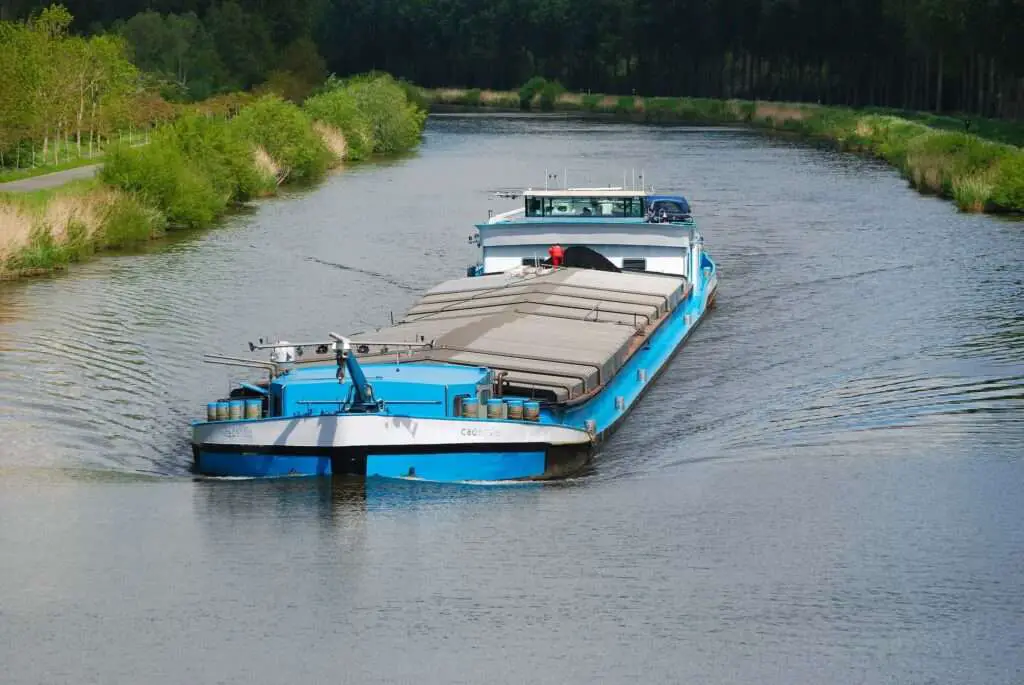
Displacement is the weight of the volume of water the boat is displaced when it is afloat.
The ratio of a boat’s displacement over the boat’s loaded waterline length (the DLR or D/L ratio) decides whether the boat is a light displacement or heavy displacement. if the ratio is over 300 then this boat is heavy displacement. if the ratio is lower than 180 then this boat is light displacement.
What does light displacement mean?
Light displacement means the ratio of a boat’s displacement over the boat’s loaded waterline length is lower than 180.
Light displacement also means the boat is light, has less material, maybe smaller sail, light rigging, etc.
The Displacement over loaded waterline length ratio (DLR or D/L ratio) formula is below
Displacement in long tons /(0.01x loaded waterline length in ft)^3
Are lighter boats better?
It depends on how you are going to use the boat. A lighter boat is awesome for racing because it is much easier and quicker to change direction, and speed up.
The lighter boat sits higher in the water so it will have less drag. The lighter boat is easy to sail with litter wind.
Most sailors do not suggest a lighter boat for an offshore cruise, because a lighter boat tends to roll over or demast in extreme weather. In the worst case, a light boat can be smashed by big wind or a big wave.
What does heavy displacement mean?
The ratio of a boat’s displacement over length is over 000, then this boat is considered a heavy displacement boat/sailboat.
A boat with a heavy displacement means the boat is heavy. The material of the boat is sturdy and heavy.
Are Heavier boats better?
Heavier boats are good for rough weather because the weight of the boat can give you a smooth ride. Heavier boats are more stable than lighter boats.
Normally heavier boats will have heavy rigging and more sail area, making the sailing complex. It might need several people to sail a heavier boat.
Light wind can hardly move a heavier sailboat. A heavier boat sails better on windy days. Heavier boats are not a good choice for new sailors.
What is a planing hull?
A planing hull is a very light displacement hull. The majority of the time the boat cruise on the surface of the water. A planing hull is fast but less comfortable for people.
What is a semi-displacement hull?
A semi-displacement hull is a combination of a planing hull and a displacement hull. Most coast cruise boats have a semi-displacement hull because a semi-displacement hull has the speed advantage of a planning hull and also has less draft than a full displacement hull.
A semi-displacement hull has more speed than a full displacement because it sits higher in the water and has less drag than a full displacement hull.
A semi-displacement hull also consumes less fuel than a full-displacement hull because it needs less power to propel.
What is a full displacement hull?
A full displacement hull is typically round in shape. The hull sits lower in the water.
A full-displacement hull has deep draft than any semi or light-displacement hull, it needs more power to cross through water.
A full displacement hull is good for an offshore cruise because the displacement hull makes the boat stable and gives you a smooth ride during rough weather. The drawback of a full displacement hull is its slow speed.
Here is a good video to explain planing hull, semi-displacement, and full displacement hull
What is maxed displacement on a boat?
The maximum displacement of a boat is the same as its full load displacement. The water weight displaced when a boat is fully loaded is its maximum displacement.
What shape of boat holds the most weight?
If only concerned with the carrying capacity, a boat like a box holds the most weight. Such as a barge in a rectangular shape with a wide flat bottom will hold the most freight than any other shape of the boat.
If you are concerned about the speed, the bow has to be in a V shape or U shape to have less drag.
What is the most efficient hull design?
A planing hull is the most fuel-efficient hull design. The planing hull is a light displacement hull so the boat basically cruises on the surface of the water. when a boat cruise on top of the water then there is not much drag underwater, and the boat can speed up quickly with little fuel.
The drawback of a planing hull is its stability. This kind of hull is best used in a calm, protected river or lake. It is not suggested to use a planing hull in offshore cruises because the boat is easy to roll over and break in the rough weather.
Multi-hulled boats are more stable than mono-hull boats. Two hulled catamarans offer remarkable stability and enormous space.
How do you maximize buoyancy on a boat?
To increase buoyancy on a boat you can do 3 things. Increasing the volume of the submerged part of a boat, increasing the density of the fluid, and removing some weight from your boat.
Increasing the volume of the submerged part of a boat
Some boat owners add foams to their boats to increase buoyancy.
You can also make the bottom of a boat wide and flat, this will also increase buoyance.
Increasing the density of the fluid
Boats sail fast in salt water than fresh water, because salt water is denser than freshwater
Removing some weight from your boat
Removing anything unnecessary from your boat can increase buoyance.
You might also like the below-related articles
Best Ships For Long Distance Sea Travel
Displacement vs. Tonnage (Explained)
Shipyard vs. Dockyard vs. Boatyard
Why Do People Hate Their Boats?
Why Do We Need To Paint Ships? (Explained)
Resources
https://en.wikipedia.org